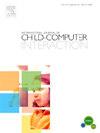虚拟CAT的设计:义务教育算法思维评估的数字化工具
Q1 Social Sciences
International Journal of Child-Computer Interaction
Pub Date : 2025-07-19
DOI:10.1016/j.ijcci.2025.100760
引用次数: 0
摘要
算法思维(AT)是当今数字社会的一项关键技能,不仅在计算机科学相关领域,而且在日常问题解决中都是必不可少的。作为数字教育和识字的基本组成部分,培养AT技能与所有学生的关系越来越密切,应该成为义务教育的标准部分。然而,成功地将人工智能整合到正规教育中需要有效的教学策略和健全且可扩展的评估程序。在本文中,我们介绍了虚拟交叉阵列任务(CAT)的设计和开发过程,这是一种不插电评估活动的数字改编,旨在评估瑞士义务教育中的算法技能。开发过程遵循迭代设计周期,结合专家评估来完善工具的可用性、可访问性和功能。参与式设计研究在塑造平台方面发挥了双重作用。首先,它从包括学生和教师在内的最终用户那里收集了有价值的见解,以确保该工具在课堂环境中的相关性和实用性。其次,它有助于收集和初步分析与学生AT技能相关的数据,为该工具在不同发展阶段的评估能力提供初步评估。这是通过一项试点研究实现的,该研究涉及4至12岁的不同学生群体,涵盖幼儿园到初中阶段。由此产生的仪器具有多语言支持,并包括基于手势和基于视觉块的编程接口,使其可供广泛的学习者使用。试点研究的结果证明了该平台的可用性和可访问性,以及它对评估AT技能的适用性,初步结果表明它能够满足不同年龄组和教育背景的需求。此外,CAT已被证明能够处理大规模的自动化评估,为将AT评估整合到教育系统中提供了可扩展的解决方案。本文章由计算机程序翻译,如有差异,请以英文原文为准。
Designing the virtual CAT: A digital tool for algorithmic thinking assessment in compulsory education
Algorithmic thinking (AT) is a critical skill in today’s digital society, and it is indispensable not only in computer science-related fields but also in everyday problem-solving. As a foundational component of digital education and literacy, fostering AT skills is increasingly relevant for all students and should become a standard part of compulsory education. However, successfully integrating AT into formal education requires effective teaching strategies and robust and scalable assessment procedures. In this paper, we present the design and development process of the virtual Cross Array Task (CAT), a digital adaptation of an unplugged assessment activity aimed at evaluating algorithmic skills in Swiss compulsory education. The development process followed iterative design cycles, incorporating expert evaluations to refine the tool’s usability, accessibility and functionality. A participatory design study played a dual role in shaping the platform. First, it gathered valuable insights from end users, including students and teachers, to ensure the tool’s relevance and practicality in classroom settings. Second, it facilitated the collection and preliminary analysis of data related to students’ AT skills, providing an initial evaluation of the tool’s assessment capabilities across various developmental stages. This was achieved through a pilot study involving a diverse group of students aged 4 to 12, spanning preschool to lower secondary school levels. The resulting instrument features multilingual support and includes both gesture-based and visual block-based programming interfaces, making it accessible to a broad range of learners. Findings from the pilot study demonstrate the platform’s usability and accessibility, as well as its suitability for assessing AT skills, with preliminary results showing its ability to cater to diverse age groups and educational contexts. Additionally, the CAT has proven capable of handling large-scale, automated assessments, offering a scalable solution for integrating AT evaluation into education systems.
求助全文
通过发布文献求助,成功后即可免费获取论文全文。
去求助
来源期刊

International Journal of Child-Computer Interaction
Social Sciences-Education
CiteScore
7.20
自引率
0.00%
发文量
73
 求助内容:
求助内容: 应助结果提醒方式:
应助结果提醒方式:


